The Famous Harrods of London
SAXS November 29, 2023The history of Harrods dates back to 1834 when Charles Henry Harrod first established a small grocery store in London’s East End. With a vision to provide the finest quality products to his customers, Harrod’s store quickly gained popularity and became known for its exceptional service and extensive range of goods.
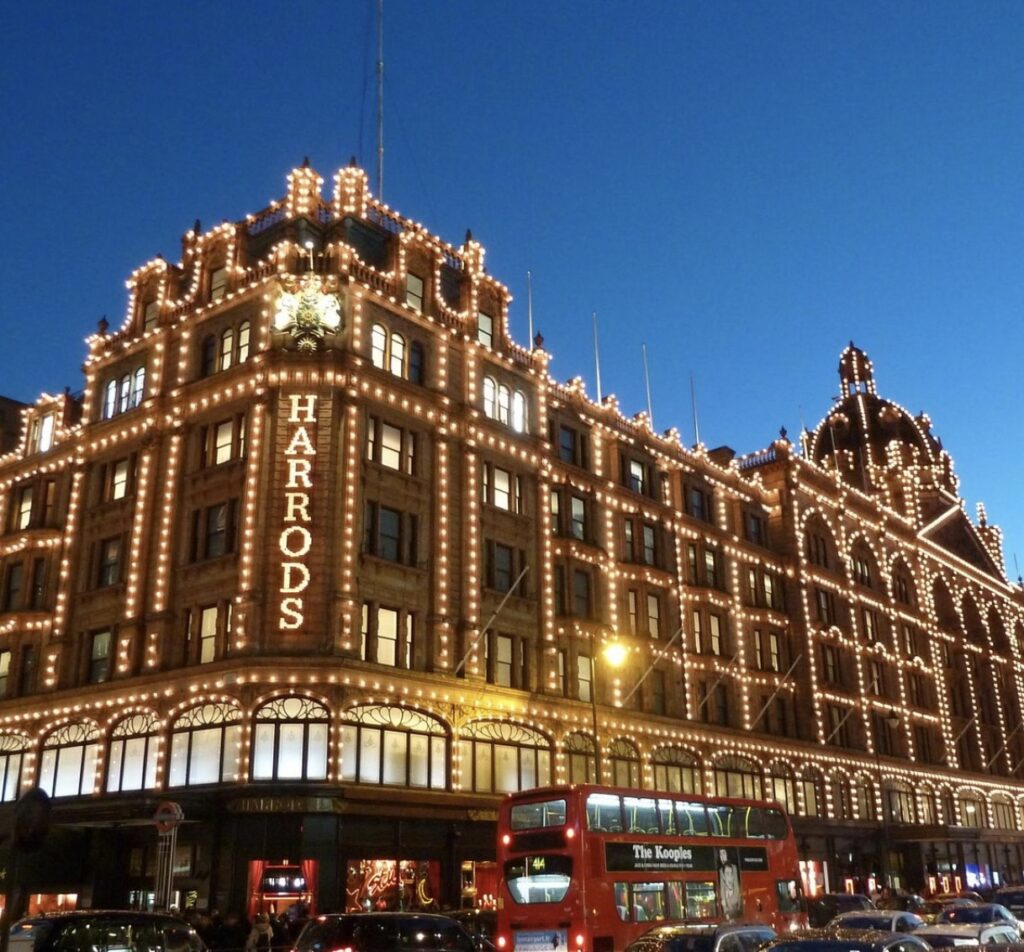
As the business flourished, Harrod relocated his store to Knightsbridge in 1849, a prestigious area in London. The new location allowed Harrods to cater to a more affluent clientele, and the store’s reputation for luxury and opulence began to take shape.
Under the leadership of Charles Digby Harrod, Charles Henry Harrod’s son, the store underwent significant expansions and renovations in the late 19th century. The iconic terracotta façade, which still stands today, was added during this time, giving Harrods its distinctive architectural charm.
In 1883, tragedy struck when a devastating fire engulfed the store, destroying much of the building. However, Charles Digby Harrod was determined to rebuild and restore Harrods to its former glory. The new store, designed by architect Charles William Stephens, was completed in 1889 and featured innovative elements such as electric lighting and hydraulic lifts, making it one of the most advanced retail spaces of its time.
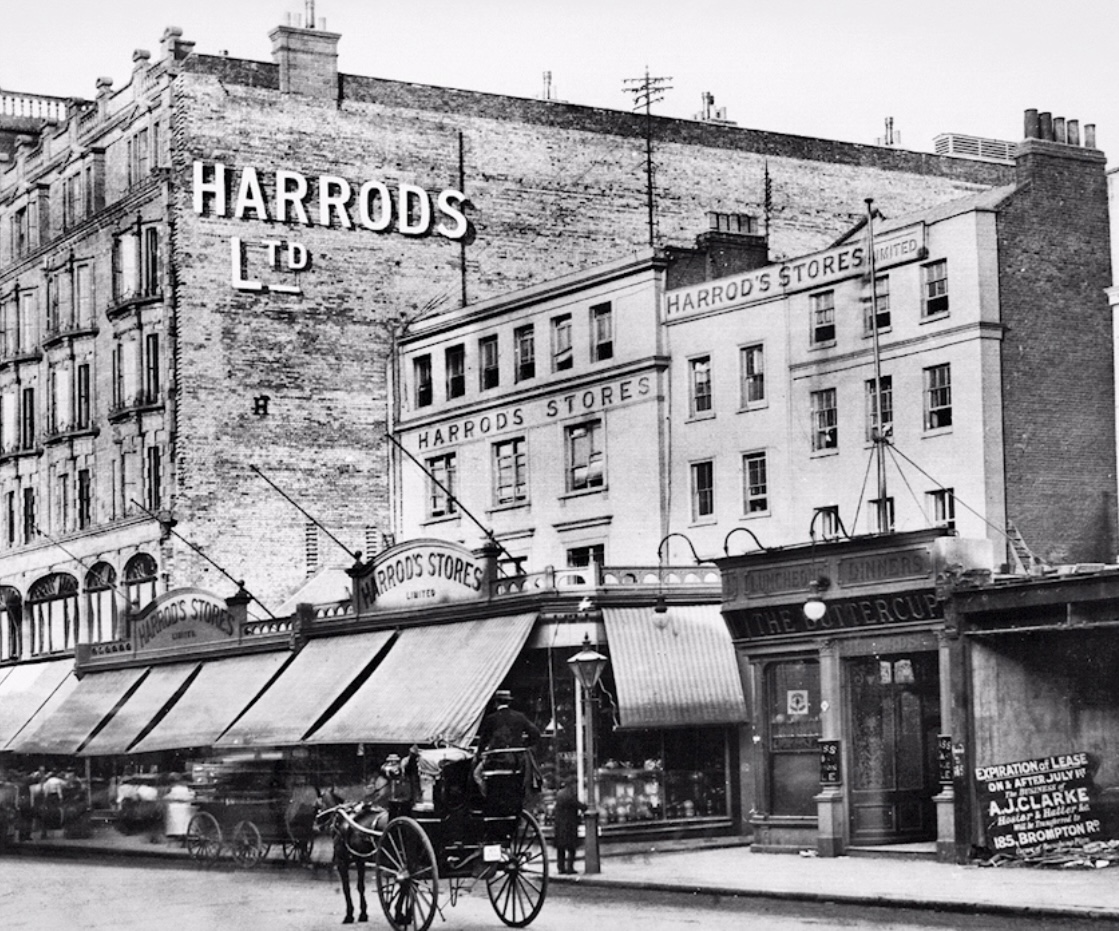
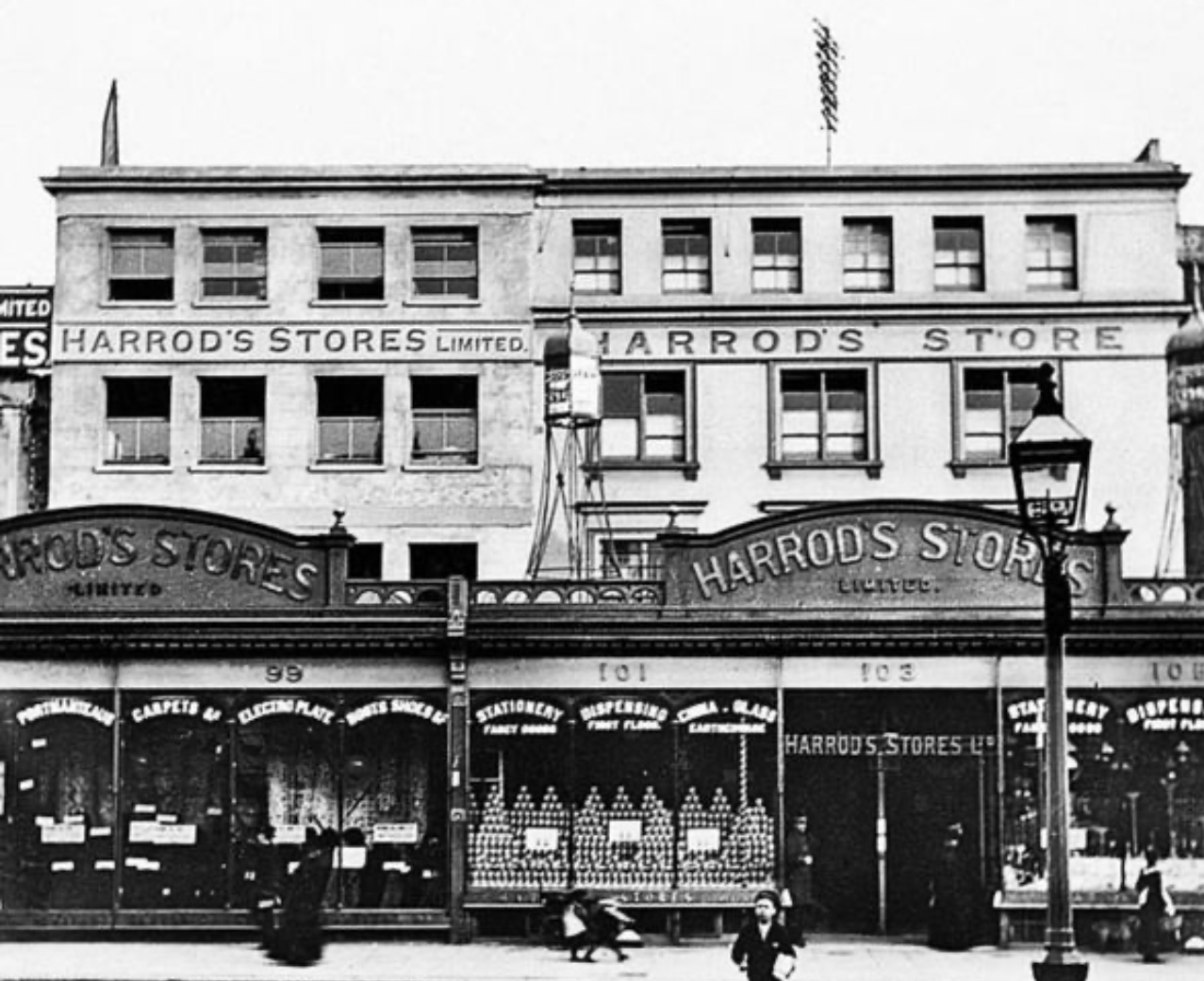
Harrods in 1830
Throughout the 20th century, Harrods continued to evolve and expand, becoming a symbol of luxury and sophistication. The store introduced new departments, including a food hall, toy department, and a pet kingdom, catering to the diverse needs and desires of its discerning clientele.
In 1985, Harrods was acquired by the Al-Fayed family, who further elevated its status as a global luxury destination. Under their ownership, Harrods underwent extensive renovations, including the addition of the iconic Egyptian escalator, which became a symbol of the store’s grandeur.
Today, Harrods stands as a world-renowned department store, attracting millions of visitors from around the globe. Its seven floors house an unparalleled selection of luxury goods, from fashion and beauty to home decor and gourmet delicacies. Harrods remains committed to its founding principles of exceptional quality, impeccable service, and a dedication to creating an unforgettable shopping experience for all who enter its doors.
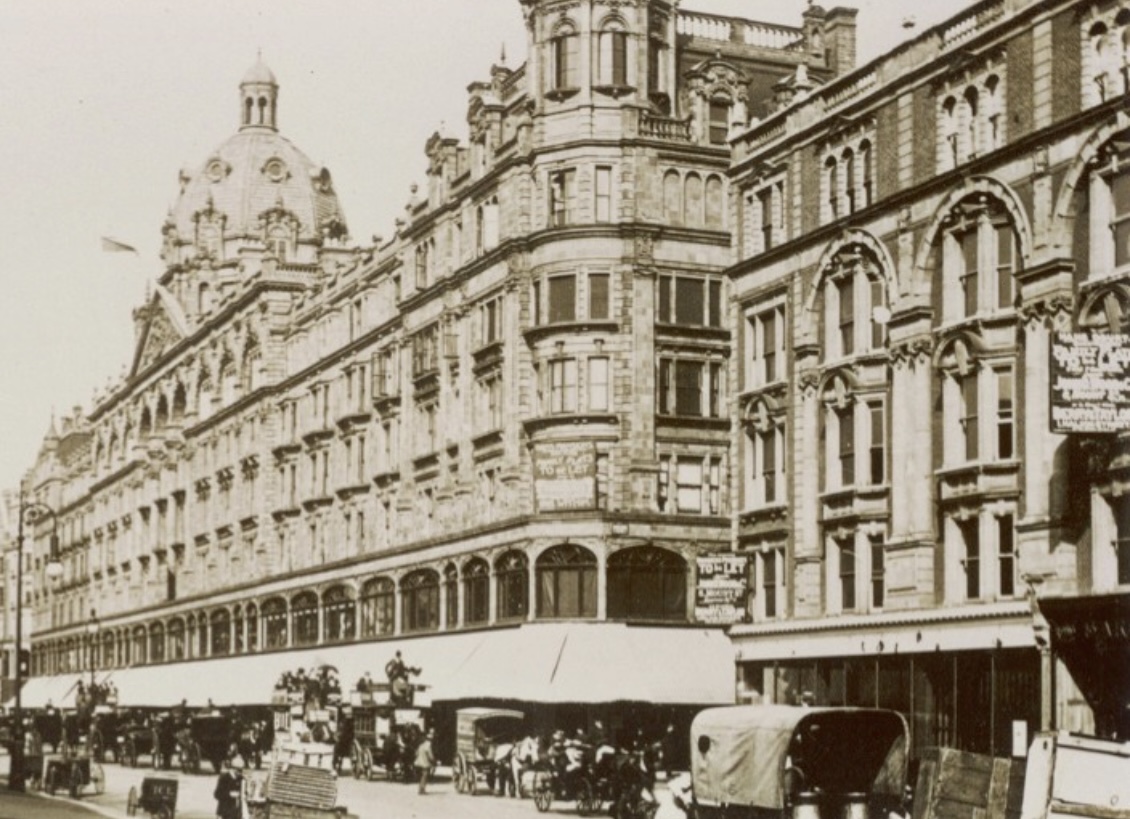
Harrods in 1896
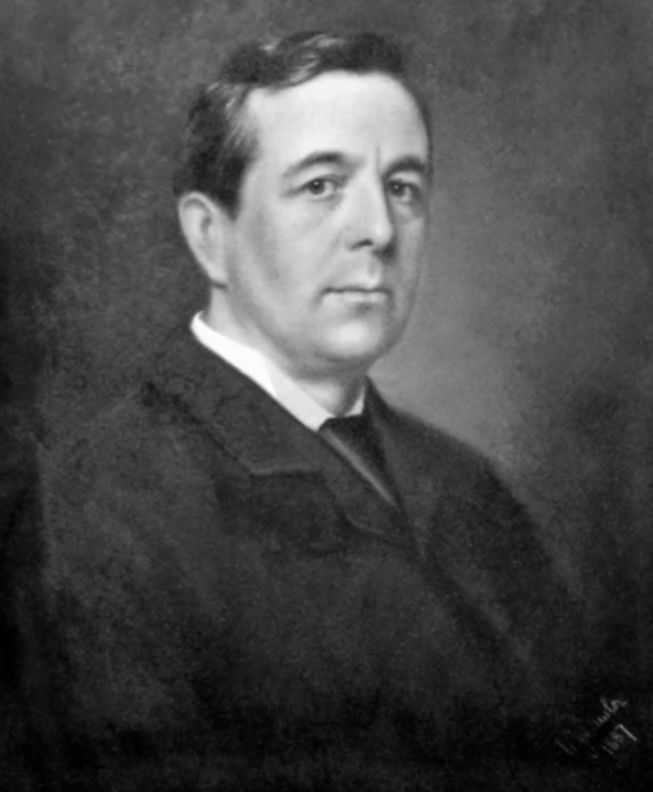
Charles Digby Harrod's Portrait
Harrods' Famous Sales
The story of what happened back in the day when Harrods departmental store in London did sales is one that still captivates the imagination of shoppers and history enthusiasts alike. It was a time when the grandeur and opulence of Harrods were at their peak, and the annual sales event was eagerly anticipated by people from all walks of life.
The year was 1919, just after the end of World War I, and London was slowly recovering from the ravages of the conflict. Harrods, known for its luxurious offerings and impeccable service, decided to hold a grand sale to uplift the spirits of the city and bring back a sense of normalcy.
As the day of the sale approached, excitement filled the air. People lined up outside the iconic store, eagerly waiting for the doors to open. The moment arrived, and with a flourish, the doors swung open, revealing a world of discounted treasures and exclusive deals.
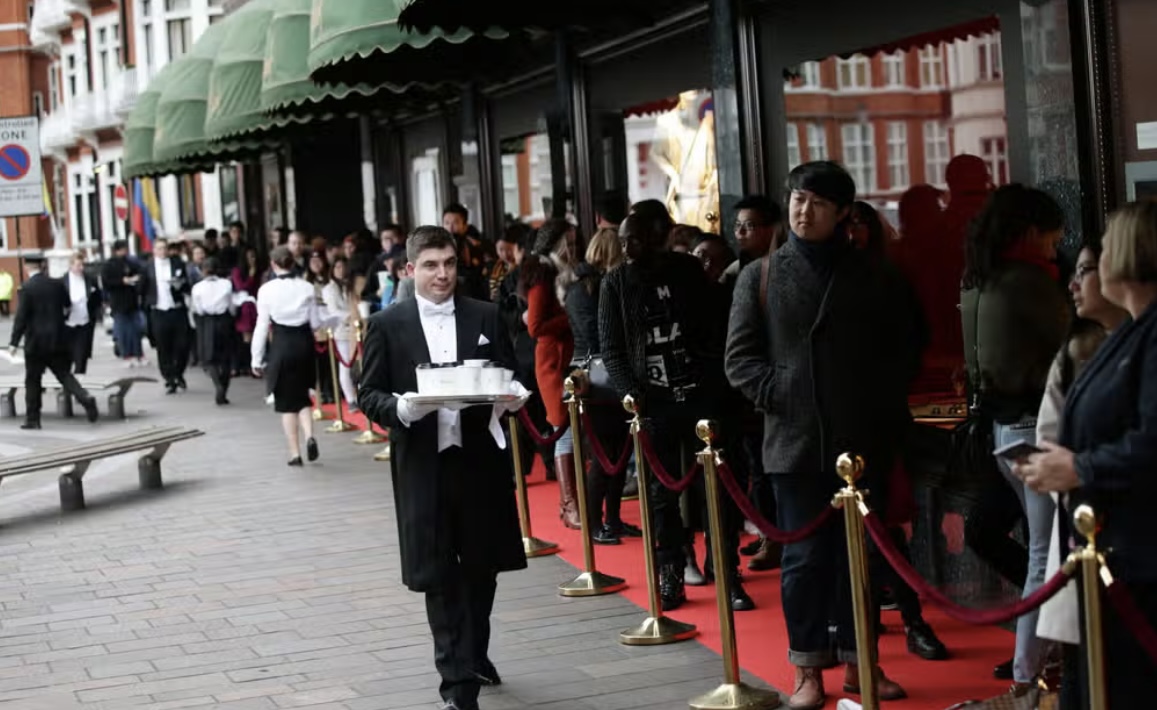
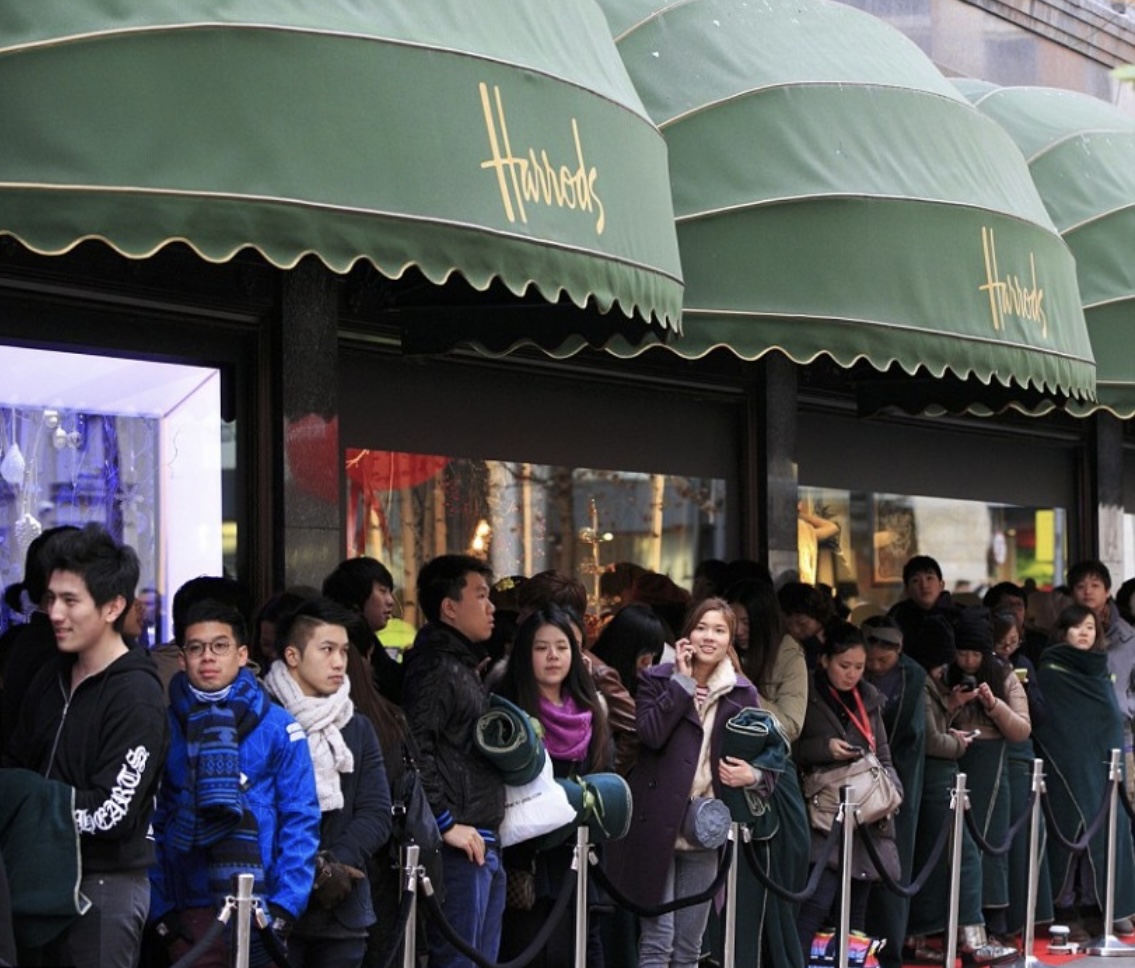
Harrods Sales
Inside, the store was a bustling hive of activity. Shoppers from all corners of the globe flocked to Harrods, drawn by the allure of high-quality products at reduced prices. The aisles were filled with a sea of people, each vying for the best bargains and unique finds.
Harrods had meticulously planned the sale, ensuring that every department had something special to offer. From exquisite clothing and accessories to fine china and home decor, there was something for everyone. The store’s renowned food halls were also abuzz with activity, offering delectable treats and gourmet delights at discounted rates.
The atmosphere was electric, with shoppers eagerly rummaging through racks of clothing, trying on hats and gloves, and examining the finest jewelry. The sales staff, dressed in their impeccable uniforms, worked tirelessly to assist customers and ensure a seamless shopping experience.
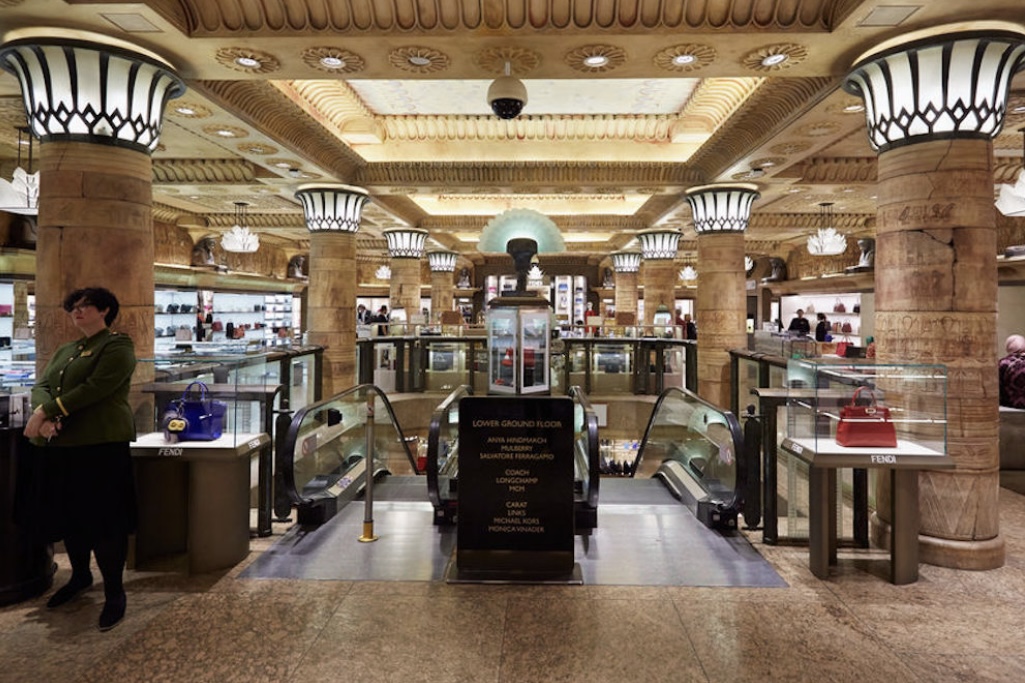
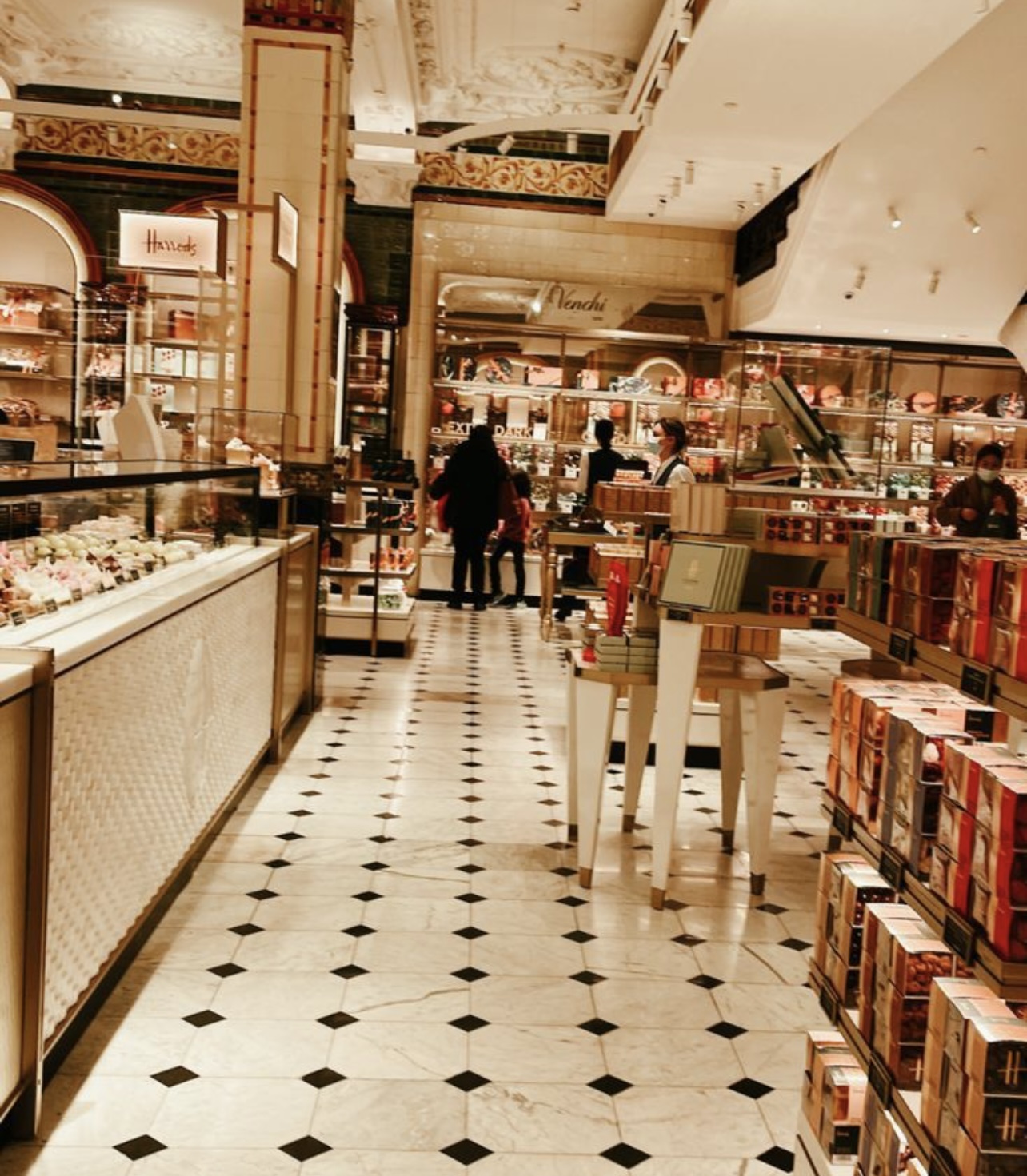
Inside of Harrods
Outside the store, the streets surrounding Harrods were transformed into a carnival-like atmosphere. Street vendors set up stalls, selling souvenirs and refreshments to the throngs of people passing by. Musicians played lively tunes, adding to the festive ambiance.
The Harrods sales event became a social gathering, where people not only shopped but also mingled and exchanged stories. It was a time when the store became a melting pot of cultures and backgrounds, as people from different walks of life came together to celebrate the joy of shopping.
As the days of the sale progressed, the excitement showed no signs of waning. Harrods continued to offer new surprises and exclusive deals, ensuring that customers kept coming back for more. The event became a resounding success, not only boosting the store’s revenue but also rejuvenating the spirit of London.
The story of what happened during those Harrods sales back in the day remains etched in the annals of retail history. It serves as a testament to the enduring allure of Harrods and its ability to create unforgettable shopping experiences. Even today, as Harrods continues to thrive, the legacy of those grand sales events lives on, reminding us of a time when shopping was not just a transaction but a celebration of luxury, style, and community.
Presently, Harrods entices a staggering 15 million patrons annually, surpassing all other stores worldwide in terms of revenue generated per square foot. However, this iconic establishment’s existence can be traced back to a fortuitous encounter between a pilferer of currants and a benevolent King William IV, many years ago.
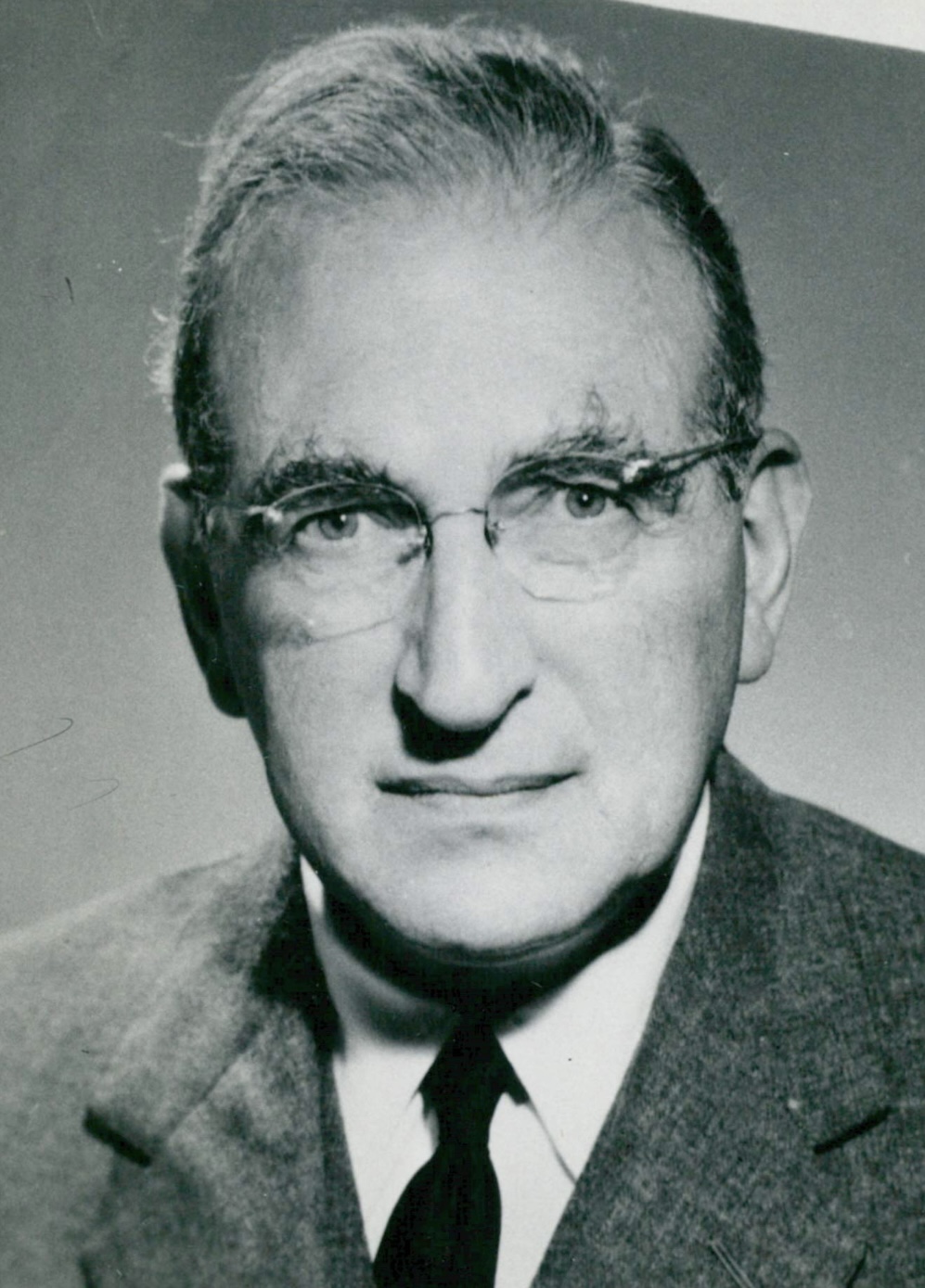
Edgar Cohen
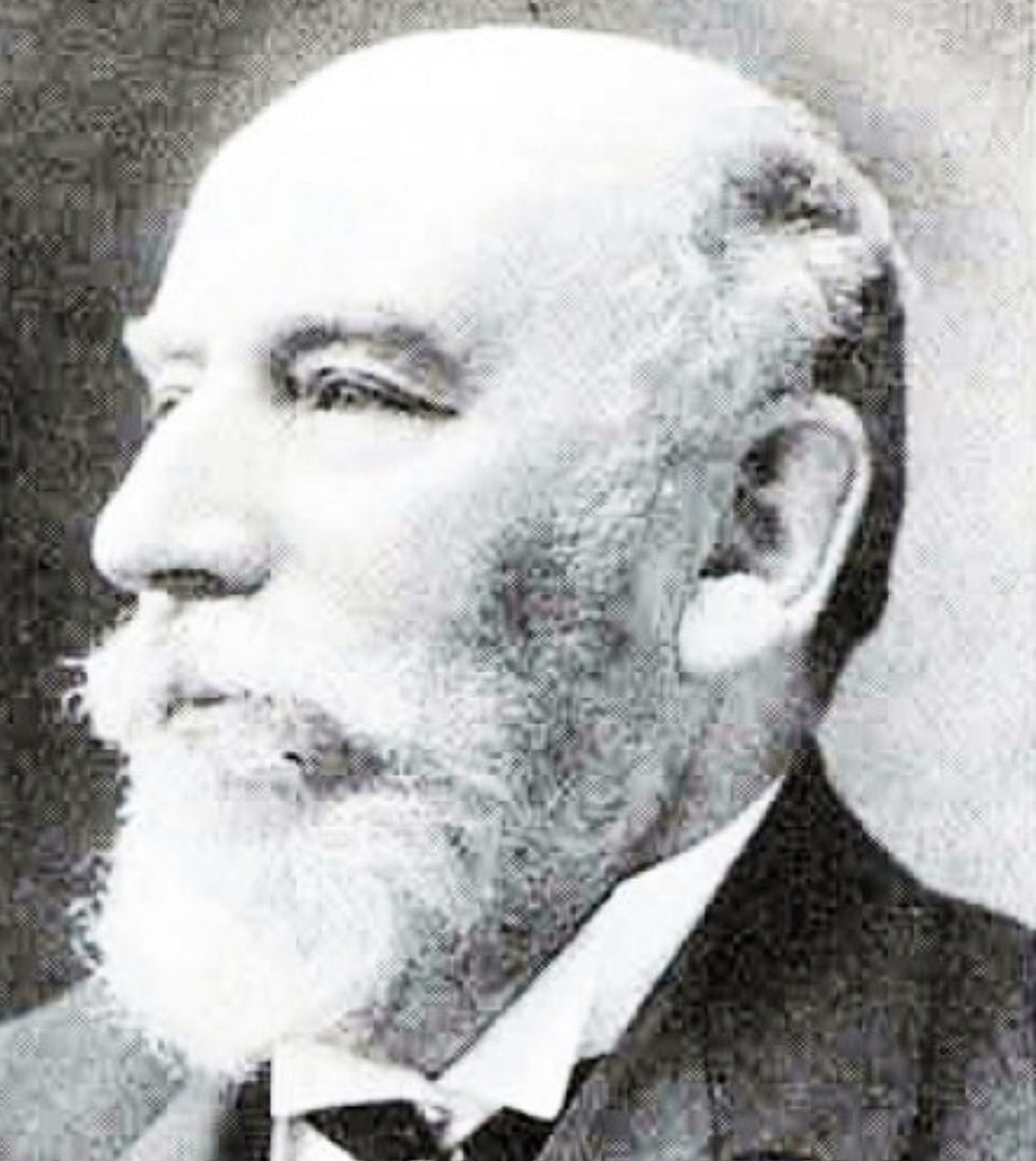
Richard Burbridge

Charles Henry Harrod

Mohamed Al Fayed
Harrods Ownership
The history of ownership of Harrods in London dates back to its humble beginnings in 1834. The store was founded by Charles Henry Harrod as a small grocery shop in the East End of London. Over the years, Harrods grew in popularity and expanded its offerings to include a wide range of products, becoming a prominent department store.
In 1889, Charles Harrod retired, and the store was sold to Edgar Cohen, who continued to expand and modernize Harrods. However, Cohen faced financial difficulties, and in 1898, he sold the store to a wealthy businessman named Richard Burbridge. Under Burbridge’s ownership, Harrods underwent significant renovations and became known for its opulent and luxurious shopping experience.
In 1959, Harrods was acquired by the House of Fraser group, a British retail conglomerate. The new ownership brought further developments to the store, including the introduction of new departments and the expansion of its famous food halls. Harrods continued to thrive under House of Fraser’s ownership, attracting both local and international customers.

However, in 1985, the Egyptian businessman Mohamed Al-Fayed purchased Harrods from the House of Fraser group. Al-Fayed invested heavily in the store, transforming it into a global luxury brand. He introduced lavish renovations, expanded the product range, and focused on providing exceptional customer service. Under Al-Fayed’s ownership, Harrods became synonymous with luxury and exclusivity, attracting high-profile clientele from around the world.
The Al-Fayed family retained ownership of Harrods until 2010 when the store was sold to the Qatar Investment Authority (QIA), a sovereign wealth fund. The QIA’s acquisition marked a new chapter in Harrods’ history, bringing in fresh investment and strategic direction. The store continued to flourish under QIA’s ownership, maintaining its reputation as one of the world’s most prestigious department stores.
Today, Harrods stands as an iconic symbol of luxury and elegance, offering an unparalleled shopping experience to its discerning clientele. Its rich history of ownership has shaped the store into what it is today, a global destination for luxury shopping, renowned for its exceptional service, exquisite products, and timeless grandeur.











